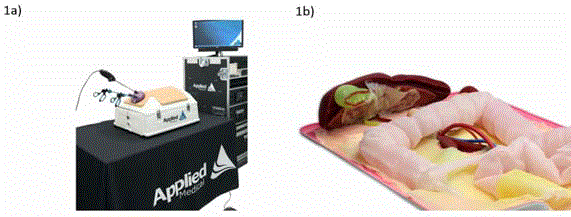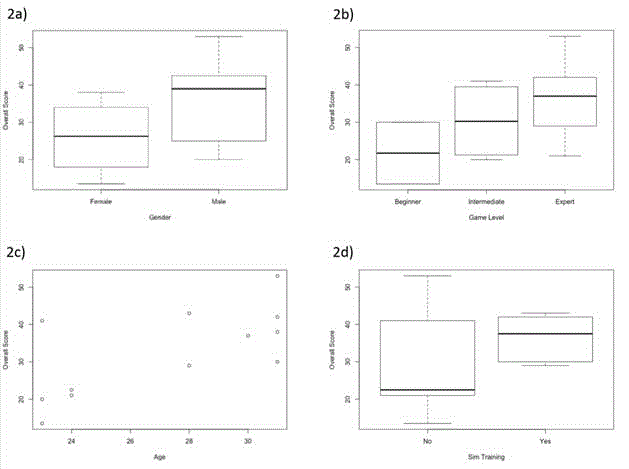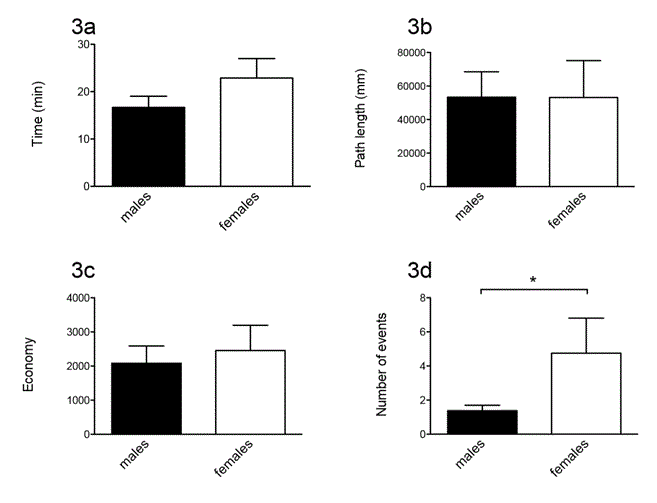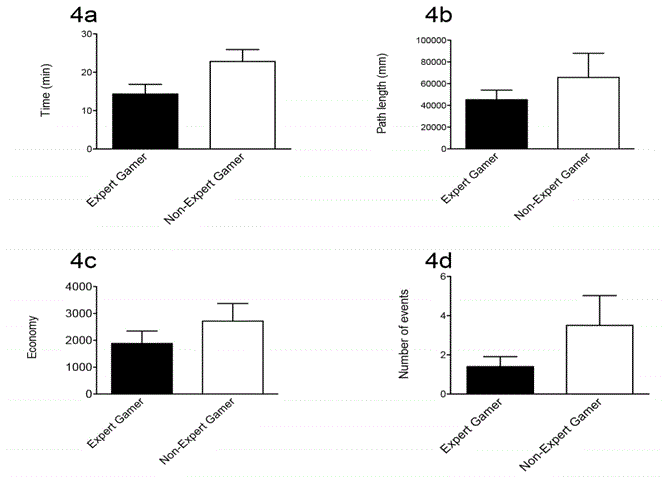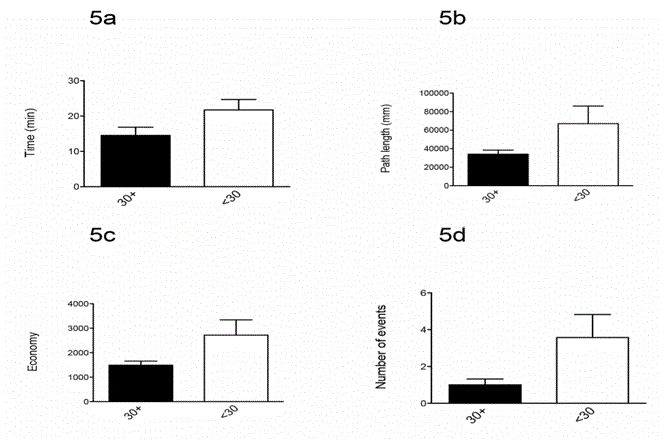Research Article
Trainee Factors Influencing Initial Performance in Single Incision Pediatric Endoscopic Surgery Simulation Training
Raphael N. Vuille-dit-Bille1, Bradley Wallace1, Lukas Fink2, Gabathuler Milsom Matthias3, Paul Montero4, Davis M. Aasen5 and Ahmed I Marwan1*
1Department of Pediatric Surgery, Children’s Hospital Colorado, USA
2Department of Mathematics, Cantonal School of Wil (SG), Switzerland
3Steag & Partner AG, St. Gallen, Switzerland
4Department of Surgery GI, Trauma, and Endocrine Surgery, University of Colorado, USA
5University of Colorado School of Medicine, USA
*Corresponding author: Ahmed Marwan, Department of Surgery and Pediatrics, Children’s Hospital Colorado, University of Colorado, Anshutz Medical Campus, 13123 East 16th Ave, B323, Aurora, CO 80045, USA
Published: 09 Oct, 2018
Cite this article as: Vuille-dit-Bille RN, Wallace B, Fink L,
Matthias GM, Montero P, Aasen DM,
et al. Trainee Factors Influencing Initial
Performance in Single Incision Pediatric
Endoscopic Surgery Simulation
Training. Clin Surg. 2018; 3: 2147.
Abstract
Background: Studies of multi-port laparoscopy training have revealed multiple trainee factors exist
that influence various components of simulated laparoscopy. Thorough identification of trainee
factors influencing initial Single Incision Pediatric Endosurgery (SIPES) aptitude, and thus training
requirements, has not been performed.
Materials and Methods: Performance during simulated single incision laparoscopic cholecystectomy
was assessed in 12 participants. Total time for the procedure, path lengths of the instruments,
economy of movements, minor and major adverse events were measured. Factors assessed by
multivariate analysis for effects on performance were: age, gender, the approximate number of
previously performed multiport laparoscopic surgeries, years of clinical experience doing multiport
laparoscopic surgeries, previous multiport laparoscopic simulator training, and expertise in console
gaming.
Result: Among assessed factors, male gender (p=0.0072), video game expertise (p=0.0291), and
higher age (p=0.0357) correlated with overall performance. Previous laparoscopic simulator
experience (p=0.0904) non-significantly correlated with simulated SIPES cholecystectomy execution.
Comparing individual outcomes in males versus females, number of errors was significantly higher
in females (p=0.0431), whereas time, path length and economy were not different between groups.
Individual outcomes were not different comparing expert video gamers vs. non-expert gamers and
comparing participants 30 years and older to participants below 30 years, respectively.
Conclusion: Gender, video game experience, and age affect performance of simulated single incision
surgery.
Keywords: Single incision surgery; Pediatric; Simulation; Training factors
Introduction
Single incision pediatric endoscopic surgery (SIPES) describes an emerging endosurgical
approach where the surgical procedure is performed through an abdominal trocar placed via
a single incision [1], providing a better cosmetic result by removing the need for multiple port
insertions [2,3]. SIPES has been demonstrated to have comparable safety and efficacy to multi-port
laparoscopic surgeries [2,4]. However, the steep learning curve has discouraged many surgeons from
adopting SIPES procedures [5,6]. Moreover, emphases on trainee work hours and performancebased
outcomes have restrained the ability of house staff to master certain skills. This is of importance
because previous work in multi-port laparoscopy has shown increased complications in the early
learning phase [6,7]. To solve this problem in all forms of laparoscopic surgery, laparoscopic
simulators are increasingly used to train residents and shorten their learning curve.
Previous study of multi-port simulation training has revealed that not all trainees are equally
prepared to utilize the training. Psychomotor aptitude [5,8-10], spatial awareness [5,9], and
perceptual speed [10] are all negatively correlated with the time required to reach proficiency.
Previous experience with multi-port laparoscopic procedures has been shown to improve learning
of new multi-port procedures [11].
Knowledge of the impacts of previous experience and factors is
not well established within SIPES simulation training. Some data
indicate that previous multi-port experience may improve SIPES
performance, without showing statistical significance [12]. Since
SIPES skills have been shown to be more difficult to obtain and more
difficult to retain than multi-port laparoscopy [13], it is of particular
importance to establish what attributes indicate that a surgical trainee
may need intensive vs. standard training opportunities.
The present study aimed to evaluate trainee factors correlating
with performance in single incision surgery. Hence factors such
as past laparoscopic experience, proficiencies console gaming;
gender, age, and training level were correlated with simulated SIPES
cholecystectomy.
Table 1
Materials and Methods
Setting
All study participants attended the same presentation on the
basics of SIPES and gallbladder anatomy a few hours prior to the
study. Questionnaires investigating participant attributes were
distributed. Participants were given a set amount of time to practice
single incision peg transfer and rope tracing prior to evaluation. Total
time, path length, and economy of movement during the simulation
were calculated by the laparoscopic simulator (Simsei Organ Models
and Skill Exercises from Applied Medical) (Figure 1a and 1b). Minor
and major events were counted by one non-blinded author of the
present study (RNV).
Outcomes
Five different metrics were assessed during the study:
(i). Total time to perform the procedure (Calot’s triangle
dissection, cystic duct and artery clipping and ligation, and gallbladder
removal)
(ii). Total path length
(iii). Economy of movement (with a lower number being ‘better’)
(iv). Number of minor events during surgery
(v). Number of major events during surgery.
Events were considered minor when they could be easily corrected
or repaired during real-time procedure, e.g. bile spillage, stone
spillage, laceration of the cystic artery. Events were considered major
if they could not be easily corrected during real-time cholecystectomy
and included lacerations to the left hepatic artery or common bile
duct injuries (Table 1).
Analysis
The following factors were assessed by multivariate analysis
for effects on performance: age, gender, the approximate number
of previously performed multiport laparoscopic surgeries, years of
clinical experience doing multiport laparoscopic surgeries, previous
multiport laparoscopic simulator training, and expertise in console
gaming. Participants’ performances on the five-different metrics were
independently ranked from best performance to worst. Thereafter
the five rankings were added, creating one single ranking. This final
ranking, considered an overall score, was used for multivariate
analysis.
For the three outcomes affecting overall performance score
(gender, age, and proficiency in console gaming), individual
outcomes (total time, path length, economy, and number of errors)
were compared between groups. Participants’ proficiency in console
gaming was divided into experts and non-experts for comparison.
Since the median age of all twelve participants was 28 years,
participants were divided arbitrarily in the two age groups ≥ 30 years
and <30 years. Furthermore, numbers of minor and major events
were summed for analysis, with major events counting double.
Statistics
Results were represented as mean and SEM (standard error of
the mean). P-values of less than 0.05 were considered significant.
Unpaired two-tailed T-tests were performed to assess individual
outcomes in two groups of participants (e.g. males vs. females).
Trainee factors for SIPES performance were assessed using linear
regression analysis. The open source statistical program R (http://
www.R-project.org/) and the software Graphpad Prism (www.
graphpad.com) were used for analysis.
Ethics
The study protocol was reviewed and approved by the Colorado
Multiple Institutional Review Board.
Figure 1
Figure 2
Figure 2
(a) Comparison of the overall score by gender, (b) Game level experience, (c) Age and (d) Previous laparoscopic simulation training. Box plots show the 25th, 50th (median) and 75th percentiles. Whiskers reflect +/- 1.5x inter quartile range markings.
Figure 3
Figure 3
(a). Time (min), (b). Path length (mm), (c). Economy and (d). Number of errors in males (black bars) vs. females (white bars). Mean values ± SEM. *p<0.05.
Results and Discussion
Fourteen participants were included in the present study.
Thereof, two were excluded due to non-functioning simulators.
Demographic information can be found in Table 1. Median years of
clinical experience were 1.5, ranging from 0 [five (42%) participants
were medical students] to 5. Six participants (50%) had previous
multi-port simulator training, and the median number of previously
performed laparoscopic cases was six (range 0 to 250). Only three
participants had performed actual SIPES cases previously (less than
three each). Participant-reported previous video game experience
ranged from expert (42%) to intermediate (33%), to beginner (17%).
One participant did not answer this question.
The overall performance score was significantly higher in males
(p=0.0072) (Figure 2a), in older participants (p=0.0357) (Figure
2b), and in participants with higher proficiencies in console gaming
(p=0.0291) (Figure 2c). Previous laparoscopic simulator experience
(p=0.0904) non-significantly correlated with simulated SIPES
performance (Figure 2d). The number of previously performed multiport
laparoscopic surgeries, and years of experience with multi-port
laparoscopic surgeries were found to have no statistically significant
correlation with overall performance score.
Comparing individual outcomes in males vs. females, number
of errors was significantly higher in females (p=0.0431), whereas
time, path length and economy were not different between groups
(Figure 3). Individual outcomes (number of errors, time, path length,
economy) were not different comparing expert video gamers vs.
non-expert gamers (Figure 4). Comparing participants ≥ 30 years
old to participants younger than 30 years, there was no significant
difference in individual outcomes (number of errors, time, path
length, economy) (Figure 5).
Since the first laparoscopic cholecystectomy was performed in
1985 by Mühe of Böblingen in Germany [14], surgery has continued
to develop and transition towards minimally invasive procedures
as technology allows. Single incision endoscopic surgery could
be viewed as a next step in this development. More complications
occur during the early part of the learning curve for laparoscopic
procedures [5]. Furthermore, single incision appendectomy has
been shown to be associated with a higher technical failure rate and
a longer operative time when compared to multiport appendectomy
[15]. Hence, surgical training programs are increasingly utilizing
laparoscopic simulation training to shorten the time to operative
proficiency, especially in centers, where single incision procedures are
performed. Given the known factors correlating with trainee aptitude
in multi-port training, it is important to establish what factors are
important in single incision training. Furthermore, dedicated single
incision laparoscopic training appears to develop competencies for
single incision and multiport laparoscopic procedures [16].
The present study aimed to evaluate trainee factors correlating
with simulated SIPES performance. Among the six factors assessed,
male gender, higher proficiency in console gaming, and age correlated
with overall performance.
Five different outcomes (time, path length, economy of
movements, minor, and major adverse events) were assessed in the
present study. In order to avoid multiple analyses, those outcomes
were ranked, and an overall performance score was calculated.
The overall performance score was higher in males in the present
study. Similarly, multiport laparoscopic simulator performance has
previously been shown to be better in males, with greatest differences
in speed and visuospatial abilities [17,18]. When assessing each
individual outcome in males versus females in the present study,
numbers of errors were higher in females, and there was a slight
tendency to increased time to accomplish the task in females. Path
length and economy of movements were similar between males and
females. Gender differences in multiport laparoscopic performance
have been shown to be more pronounced in medical students and
seem to offset in residents. This likely due to an increased initial selfconfidence
in males, leading to a shorter reaction time and a riskier
behavior [18]. Nevertheless, the lower amount of error rates in males in
the present study does not reflect the suspected riskier behavior. Video
game experience has been shown to correlate with initial multiport
simulator performance with a decreasing strength of correlation
with increasing complexity of the task [17,19,20]. Similarly, higher
proficiency in video console gaming correlated with better SIPES
performance (overall score) in the present study. Comparing the
different outcomes individually in participants describing themselves
as ‘expert gamers’ compared to non-expert gamers, no significant
difference was detected, but a trend to lower error rates and less time
to perform the task was seen. Whereas a steeper learning curve of
simulated laparoscopic performance in younger trainees has been
shown previously [21], higher age correlated with better performance
in the present study. This likely rather reflects the bigger laparoscopic
experience in older participants, that has been shown by others to
correlate with the familiarization on the simulator [12,22]. Similarly,
previous multiport simulator training showed a non-significant trend
to better SIPES performance in the present study. Nevertheless, the
number of previously performed multi-port surgeries and years of
clinical experience did not correlate with overall performance in the
present study.
The strengths of this study are the prospective study design
and the fact that all participants were almost complete novices in
performing SIPES cases (with a maximal number of 3 SIPES cases
performed previously per participant).
An obvious limitation of the current study is the low number
of participants an their heterogeneity (i.e. medical students and
residents). To address this issue, the impact of clinical experience
was included in the multivariate analysis, and was shown not to affect
overall performance.
Future studies of SIPES simulator training should examine the
relation of these factors to participants’ psychomotor proficiency
using validated measures, time to proficiency across multiple rounds
of training, and skill retention timeline. Increased sample size may
uncover less prominent factors and remove the need for a composite
score, thus allowing for more precise conclusions to be reached.
Factors identified as independent predictors of trainee aptitude,
once adequately identified, could be used to develop a parsimonious
screening tool to identify trainees who may need more time or
resources.
Figure 4
Figure 4
(a) Time (min), (b) Path length (mm), (c) Economy and (d) Number of errors in expert gamers (black bars) vs. non-expert gamers (white bars). Mean values ± SEM. *p<0.05.
Figure 5
Figure 5
(a) Time (min), (b) Path length (mm), (c) Economy and (d) Number of errors in patients with previous simulator experience (black bars) vs. patients without prior experience (white bars). Mean values ± SEM. *p<0.05.
References
- Hansen EN, Muensterer OJ. Single incision laparoscopic splenectomy in a 5-year-old with hereditary spherocytosis. J Soc Laparoendosc Surg. 2010;14(2):286-8.
- Aly OE, Black DH, Rehman H, Ahmed I. Single incision laparoscopic appendicectomy versus conventional three-port laparoscopic appendicectomy: A systematic review and meta-analysis. Int J Surg. 2016;35:120-8.
- Seims AD, Nice TR, Mortellaro VE, Lacher M, Ba'Ath ME, Anderson SA, et al. Routine utilization of single-incision pediatric endosurgery (SIPES): a 5-year institutional experience. J Laparoendosc Adv Surg Tech A. 2015;25(3):252-5.
- Rich BS, Creasy J, Afaneh C, Muensterer OJ. The international experience of single-incision pediatric endosurgery: current state of the art. J Laparoendosc Adv Surg Tech A. 2014;24:43-9.
- Buckley CE, Kavanagh DO, Gallagher TK, Conroy RM, Traynor OJ, Neary PC. Does aptitude influence the rate at which proficiency is achieved for laparoscopic appendectomy? J Am Coll Surg. 2013;217(6):1020-7.
- Prystowsky JB. Are young surgeons competent to perform alimentary tract surgery? Arch Surg. 2005;140(5):495-500.
- [No authors listed]. A prospective analysis of 1518 laparoscopic cholecystectomies. The Southern Surgeons Club. N Engl J Med. 1991;324(16):1073-8.
- Siska VB, Ann L, Gunter De W, Bart N, Willy L, Marlies S, et al. Surgical Skill: Trick or Trait? J Surg Educ. 2015;72(6):1247-53.
- Nugent E, Hseino H, Boyle E, Mehigan B, Ryan K, Traynor O, et al. Assessment of the role of aptitude in the acquisition of advanced laparoscopic surgical skill sets: results from a virtual reality-based laparoscopic colectomy training programme. Int J Colorectal Dis. 2012;27(9):1207-14.
- Groenier M, Groenier KH, Miedema HA, Broeders IA. Perceptual Speed and Psychomotor Ability Predict Laparoscopic Skill Acquisition on a Simulator. J Surg Educ. 2015;72(6):1224-32.
- Ha U-Syn, Lee KW, Kim SW, Jeon SH, Kwon TG, Park HK, et al. The influence of prior laparoscopic experience on learning laparoendoscopic single site surgery: A prospective comparative preliminary study using cystorraphy in a live porcine model. BMC Urol. 2017;17:57.
- Lewis T, Aggarwal R, Kwasnicki R, Darzi A, Paraskeva P. Does previous laparoscopic experience improve ability to perform single-incision laparoscopic surgery? Surg Endosc. 2012;26(5):1214-9.
- Ellis SM, Varley M, Howell S, Trochsler M, Maddern G, Hewett P, et al. Acquisition and retention of laparoscopic skills is different comparing conventional laparoscopic and single-incision laparoscopic surgery: a single-centre, prospective randomized study. Surg Endosc. 2016;30(8):3386-90.
- Reynolds WJ. The first laparoscopic cholecystectomy. J Soc Laparoendosc Surg. 2001;5:89-94.
- Clerveus M, Morandeira-Rivas A, Moreno-Sanz C, Herrero-Bogajo ML, Picazo-Yeste JS, Tadeo-Ruiz G. Systematic review and meta-analysis of randomized controlled trials comparing single incision versus conventional laparoscopic appendectomy. World J Surg. 2014;38(8):1937-46.
- Kwasnicki RM, Aggarwal R, Lewis TM, Purkayastha S, Darzi A, Paraskeva PA. A comparison of skill acquisition and transfer in single incision and multi-port laparoscopic surgery. J Surg Educ. 2013;70(2):172-9.
- Grantcharov TP, Bardram L, Funch-Jensen P, Rosenberg J. Impact of hand dominance, gender, and experience with computer games on performance in virtual reality laparoscopy. Surg Endosc. 2003;17(7):1082-5.
- Ali A, Subhi Y, Ringsted C, Konge L. Gender differences in the acquisition of surgical skills: a systematic review. Surg Endosc. 2015;29(11):3065-73.
- Paschold M, Schroder M, Kauff DW, Gorbauch T, Herzer M, Lang H, et al. Virtual reality laparoscopy: which potential trainee starts with a higher proficiency level? Int J Comput Assist Radiol Surg. 2011;6(5):653-62.
- Lynch J, Aughwane P, Hammond TM. Video games and surgical ability: a literature review. J Surg Educ. 2010;67(3):184-9.
- Salkini MW, Hamilton AJ. The effect of age on acquiring laparoscopic skills. J Endourol. 2010;24(3):377-9.
- Grantcharov TP, Bardram L, Funch-Jensen P, Rosenberg J. Learning curves and impact of previous operative experience on performance on a virtual reality simulator to test laparoscopic surgical skills. Am J Surg. 2003;185(2):146-9.


